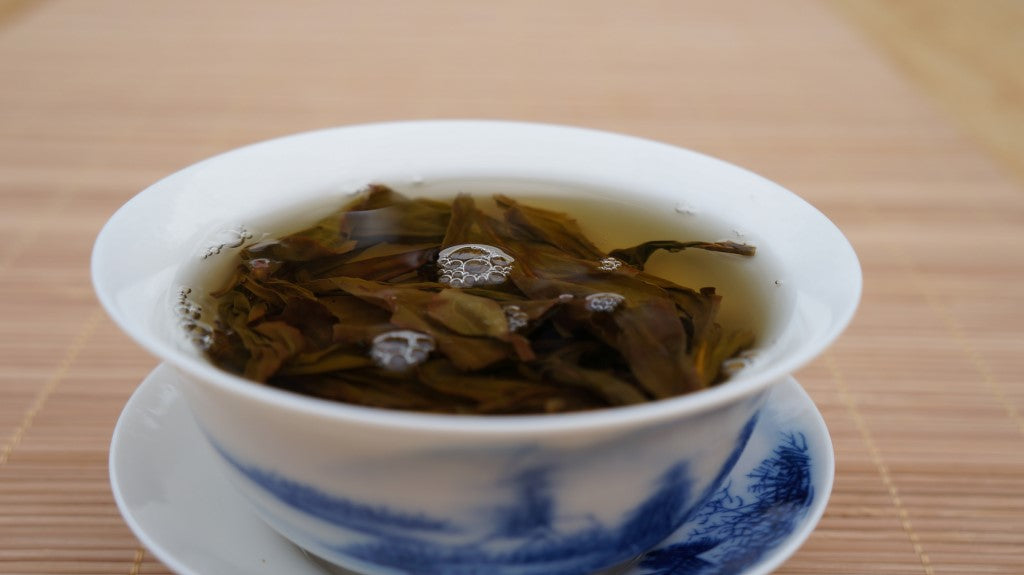Your Cart is Empty
Free shipping on orders over $49 (Canada: USD$100; Global USD$150)
Free shipping on orders over $49 (Canada: USD$100; Global USD$150)
Free shipping on orders over $49 (Canada: USD$100; Global USD$150)

March 25, 2021 3 min read
Introduction to Gongfu
In the Western world, tea is most commonly prepared by infusing 2-3 grams of tea in 8 ounces of water for 3-5 minutes. This brewing method, which we'll call "Western style" for purposes of distinguishing infusion methods, is just one approach to preparing tea. In the vast world of tea, there is rich tapestry of history and traditions connected to the appreciation and enjoyment of tea leaves. Today, we’ll take a look at one of our favorite methods to taste and enjoy tea: Gong Fu Cha
First, let’s look at the translation of Gong Fu Cha工夫茶 - meaning “Tea With Great Skill”, and how the modern interpretation of the method can be applied to tasting tea.
Commonly regarded as originating in Chaozhou city in Guangdong, China, the modern utility is a blend of Chinese, Taiwanese, and Japanese practices. This method uses a higher leaf-to-water ratio, encouraging smaller brews that are steeped for short periods of time. This results in concentrated flavors and aromatics that evolve over the course of 5-10 infusions. The modern Gong Fu style of tea-making is simply about balancing all tea-making variables with a high degree of accuracy and continuity. In this way, the full taste can be accurately derived from the maximum amount of brews that tea can produce.
Let’s take a look at the variables that impact the experience we get when brewing tea.
Variables in Brewing Tea
Quality Of The Tea:
Whole leaf teas provide the most amount of information as to how tea was picked and processed. We recommend using full leaf teas in order to build a robust understanding of the visual markers evident in common standards. Generally speaking, the more broken the leaf is (or finer the cut), the faster compounds are extracted into the water. This is due to the increased surface area of the leaf
How Much Tea To Use:
Volume is integral in enjoying a balance of flavors and textures in the mouth. A good place to start is 5 grams of loose leaf tea per 100 milliliters of water. As you become more familiar with the tea, explore the impact of using a higher or lower leaf-to-water ratio.
Water Temperature:
The temperature of water used impacts the speed and types of compounds that are released into your cup. Generally speaking, cooler water will lessen the strength of the brew and may preserve some of the aromatic properties of the tea. Consider playing with multiple water temps to find what works best for you. Keep in mind that you may even change the temperature halfway through your session!
Brewing Duration:
The fun from the higher leaf-to-water ratio in gongfu brewing is that infusions can be as short as 10 seconds long! Begin with an initial brew time of 15-30 seconds, adding 15 second to each subsequent infusion.
Equipment:
Traditionally a teapot or gaiwan with a volume of 100-150 ml is used for gongfu, though you may also use a tea press or French press if you do not have a teapot or gaiwan.
Steps In Modern Gongfu Brewing
Begin by warming your teapot or gaiwan with boiling water. After discarding the water from the pot, add tea leaves using a bamboo scoop or any other way to the warmed teapot.

Add hot water over the leaves to “rinse” or “awaken” them. If you are using a clay teapot, fill it until it overflows. The tea is allowed to infuse for a short period of time (~ 5 seconds) before pouring out the water into your fairness pitcher and cups, warming them.

Begin your first infusion. This time, the tea leaves should be infused longer, around 15 to 20 seconds.

Pour the tea into a “fairness” cup or other vessels, such as a small pitcher, before pouring the tea into each cup. The use of a fairness cup allows all aspects of the tea to be thoroughly mixed before pouring into cups.

Utilizing gong fu brewing allows you to enjoy several infusions. Continue brewing, adding 10-15 seconds more for each subsequent infusion and adjusting per your desired experience.

Take time to familiarize yourself with the sights, aromas, tastes, and memories that rise from the attentive approach this tea practice can provide. This method allows for complete immersion and control over the little variables in tea preparation.
Have you had the opportunity to taste and appreciate tea using this method? How have you found it differs from other methods? We hope you share with us your experiences and found this brief tutorial to be helpful!
Be the first to learn about new products, sales, and fresh content.
Be the first to know about new tea releases, sales, and events. We promise
our emails are infrequent.